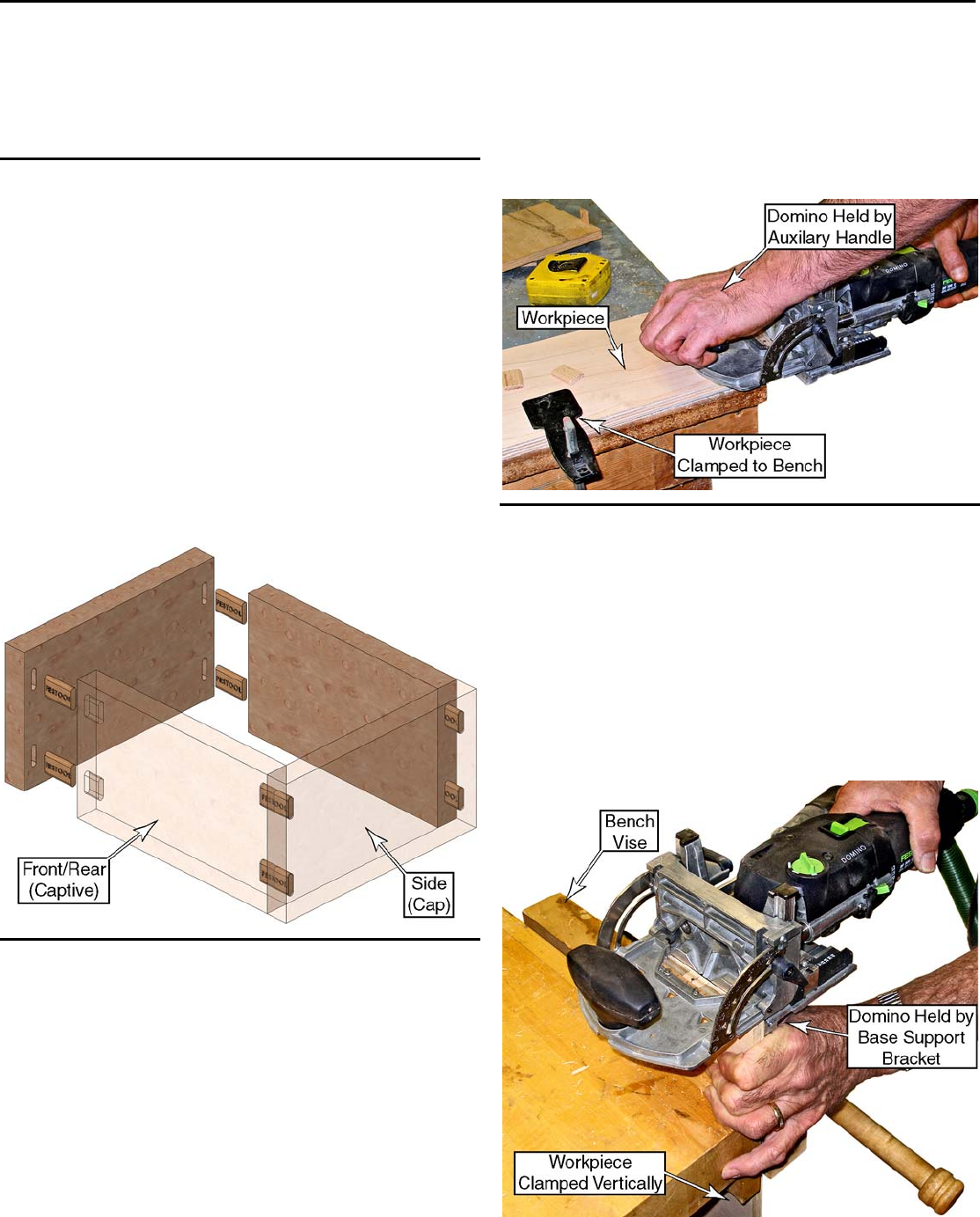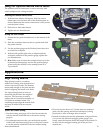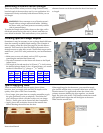
Making Butt Box Joints
Butt box joints are typically used in general box construction
or for drawer construction. The Domino tenons strengthen
the joint without the need for additional fasteners. The
example below highlights drawer construction, but the same
techniques are used on other types of box construction.
14 Domino DF 500 Tenon Joiner
Construction Tips
► For drawer construction with a separate drawer front, the
front and rear of the box should be Captive, as shown
below.
► The drawer front is installed onto the drawer box after
the box has been assembled.
► This increases the strength of the drawer because the
tenons are in shear (perpendicular) to the operation of
opening and closing the drawer.
► The ends of the side boards are concealed by the
separate drawer front.
► For drawer construction without a separate drawer front,
the Sides should be Captive and the Front/Rear should be
the Caps (the reverse of the image below).
► For cabinet carcase construction, the Top/Bottom of the
carcase should be Captive (also see Making Carcase Butt
Joints on page 17).
Machining the Captive-Side Tenons
1. Choose a Domino tenon size to be less than or equal to
1/3 of the board’s thickness.
2. Set the height of the fence so the Domino tenons are in
the center of the board’s thickness.
3. Set the mortise depth according to the instructions on
page 9.
► Note that if your workpieces are thin, you may need to
offset the tenon from center as shown in the picture on
page 9.
► For very thin material that you use frequently for
drawer sides, you may consider setting up a special
plunge depth stop described on page 19.
4. Clamp the Captive boards flat to your workbench.
5. Align the tenon position using the locating pins (refer to
the picture on page 11).
6. Grasp the Domino joiner by the auxiliary handle, hold it
firmly down to the workpiece, and slowly plunge the
cutter into the edge of the workpiece.
Machining the Cap-Side Tenons
1. Don’t change the fence height from the previous
operation. It is used to register the mortise placement
from the edge of the board.
2. Install the Base Support Bracket as described on page 12.
3. If necessary, change the mortise depth setting.
4. Clamp the workpiece in a vertical position as shown.
5. When plunging, grasp the Domino joiner at the Base
Support Bracket and hold it firmly against the face of the
workpiece.


















